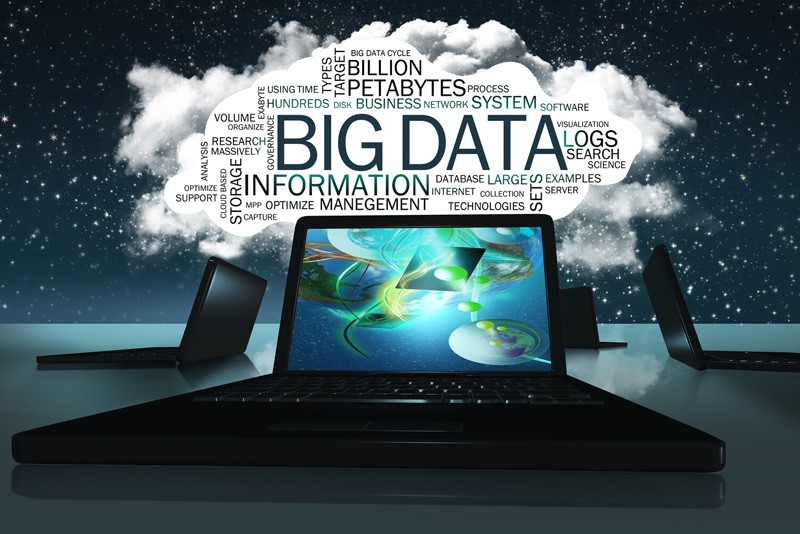The rapid spread of COVID -19 has brought together healthcare professionals, researchers and data scientists to the forefront to find an innovative solution to handle the pandemic with the right data. Now, what was initially termed as a normal flu has ascended to become a global pandemic that has affected every part of the world. Healthcare systems on a global level and throughout the United States have begun to change their approach towards this pandemic and has enacted prominent measures to slow the rate of spread and “flatten the curve”. The spread of this new coronavirus has brought advanced big data analytics tools to the forefront, with entities from all sectors of the healthcare industry seeking to monitor and reduce the impact of this virus. Researchers are utilizing innovative big data analytics to comprehend and combat corona virus from a number of angles. Big data analytics is used to analyze patient data sets and identify patterns that can help in effective COVID-19 detection and recovery. With the assistance of data entry services, all complex patient data collected during the pandemic (both internal and external) can be organized, stored and analyzed to understand the current trends and make valuable decisions.
Reports suggest that the overall big data technology market is expected to witness growth from USD 36.8 Billion in 2018 to USD 104.3 Billion by 2026 at a CAGR of 14% during the forecast period. According to experts, investment in robotic process automation will exponentially rise in the coming years. Between identifying signs and symptoms, tracking the virus and monitoring the availability of hospital resources, researchers are dealing with a huge amount of data – too much for humans to comprehend and analyze on their own. There are several big data components to this pandemic where artificial intelligence (AI) can play a big role. One such unique component is biomedical research. A lot of research is being done to develop a vaccine and to find out whether there are any current drugs that work against COVID -19. All of these research projects are using AI and machine learning to map details about the virus to data in pharmacological databases and genomic databases. For instance, several organizations have launched projects – Amazon Web Services, Google Cloud, and others have recently offered researchers free access to open datasets and analytics tools to help them develop COVID-19 solutions faster.
Understanding the Role of Big Data
When applied to COVID-19, big data play a key role to mitigate and control the spread of this disease. In terms of coronavirus, big data is the accumulation of all data points related to this disease being received from around the world. The data can be used to identify geographical hotspots, create death prediction models, provide estimates regarding testing, need for testing supplies and guide decision-making among policymakers, health care providers, and other key stakeholders. Real-time tracking of covid cases has been instrumental not only in guiding policy but also in helping keep people informed around the globe. This real-time tracking has also provided insight into those diagnosed with and recovering from COVID-19. The information will be used to guide efforts to reopen different sectors of the economy and analyze the overall number of new cases or the number of recovered people who may have immunity to COVID-19.
The disease curve has comparatively flattened with many places around the world practicing social distancing and stay-at-home efforts. In order to maintain the workflow while practicing social distancing as per the World Health Organization (WHO) guidelines, some organizations have opted for remote working for their employees. Big data provides the opportunity for correct contract tracing which essentially involves connecting the dots of who an infected person may have been in contact with prior to the diagnosis. Even though contact tracing at this point in the epidemic can be hard to implement on a large scale, the facts show that contact tracing works and big data provides the opportunity for accurate contact tracing based on so much more than just an individual’s memory of whom they have spent time with. In short, big data and data analysis has been involved in curtailing the COVID-19 epidemic.
Role of Big Data in the Fight against COVID-19
Big data has been a tremendous help in the fight against COVID-19 in the following ways –
- Detection – The role of big data in COVID-19 support begins from the first step – detection. Reports suggest that Toronto-based big data startup BluDot detected the earliest anomalies relating to what was then considered a mysterious pneumonia strain in Wuhan, China in December, 2019 by using their big data algorithm that pulled data from a variety of sources. The algorithm analyzed data from health records, airline ticketing data, government notices, news reports and disease networks to predict the spread of the disease. AI technology was utilized to diagnose the Coronavirus through imaging analysis, decreasing the diagnosis time from CT scan results from about 5 minutes to 20 seconds. Through automation, AI can not only help cope with the rising diagnostics workloads but also free up valuable resources to focus on treating patients.
- Predicting and handling risks – Predicting an individual’s risk of infection and better understanding the risk factors involved is crucial in a situation like this. Big data can also play a big role in analyzing screening data of patients and connecting it with unnamed health issues of hospitalized patients. The results of this analysis will help determine the key risk factors. As more and more data is fed into big data programs and tools, the accuracy of risk predictions will increase. For instance, Google’s DeepMind Artificial intelligence system uses big data to understand the virus by analyzing its key characteristics.
- Predicting patient treatment outcomes – Big data is a powerful tool in predicting treatment outcomes and understanding the viability of different treatment modalities administered. The strategy is a form of high-tech triage, where physicians compare the potential risks of a course of treatment against its likelihood to succeed. Amid the COVID-19 pandemic, physicians consider factors like age and pre-existing conditions to analyze the treatment outcomes. The big data platform uses machine learning to predict patient outcomes based on their progression and characteristics. Further, it makes accurate treatment recommendations, such as hospitalizing the patient or moving them to intensive care.
- Monitoring patients as and when they enter hospitals – The healthcare community is looking for many options for using big data and machine learning to screen patients, provide quick intervention and allocate resources. In fact, Tampa General Hospital in Downtown Tampa, Florida was one of the first facilities to deploy face-scan and AI technology to respond to and classify incoming patients. The system, with just a quick scan determines who has a fever and who does not, and signals for further examination when the patient shows potential signs of infection. In remote or understaffed health care settings, this technology will be important for making the best use of limited staff and resources. The ability to keep a check on the number and condition of patients the moment they enter a healthcare facility is important. Knowing at a glance how many patients require further screening, how many hospital beds are available and which hospital is best equipped to deal with incoming casualties or illness can save lives. Keeping first responders, hospital staff and dispatch professionals informed with accurate, real-time data about the availability of medical staff and resources is essential for allocating limited supplies effectively. It is also important for sending patients to facilities that can observe them promptly and respond as quickly as possible to the most severe cases.
- Analyzing the real-time spread of virus – Big data tools can be utilized to analyze disease data and information about senior citizens who are particularly at risk of contracting coronavirus. The algorithms and tools can track these people, keeping in mind factors such as obesity or diabetes. These analysis reports will suggest healthcare centers and hospitals where additional medical facilities will be required. Data scientists are continuously working on mobile applications that will be used for contact tracing. By utilizing the location data on their Smartphones, people can be alerted if they have been exposed to the virus. In fact, a team at Southern Illinois University (SIU) has developed a data visualization tool that uses GPS data to alert users about locations of COVID-19 cases.
- Virus tracking dashboards – The role of big data in COVID-19 aid is becoming more evident with organizations like WHO and CDC creating dashboards based on it. These dashboards help track data from different countries and show the complete list of confirmed cases, deaths and locations. In addition, these dashboards can also be used to prepare datasets for big data models that can predict possible hotspots and alert the healthcare authorities in advance. Another big data process used against COVID-19 is outbreak analytics which deals with the collection and analysis of outbreak response data. Data including deaths, confirmed cases, tracing people contacted by infected patients, population densities, and more are used to develop data models for the disease. In addition, these models can predict peak infection rates and their impact.
Big data technology is incredibly powerful and useful. However, in order to harness its full potential, it is important that people who are familiar with data models, and those who rightly understand the epidemiology and the medical implications of the virus work together. With the right technology applied in the right direction, it is possible to minimize the impact of the disease today and in the future.
In the upcoming years, big data will play a crucial role in analyzing global data about detected viruses, disease modeling, tracking human activity and visualization of this data. As more and more data pile up into huge datasets, data scientists will have a better shot at preventing such outbreaks. Managing Big Data is easier with high quality data entry outsourcing services that ensure quick turnaround time at a highly competitive price. Robust technology and software help process high quality and accurate data within short turnaround times.




